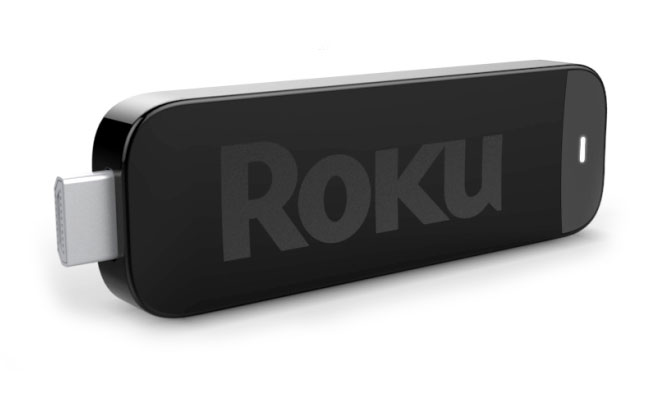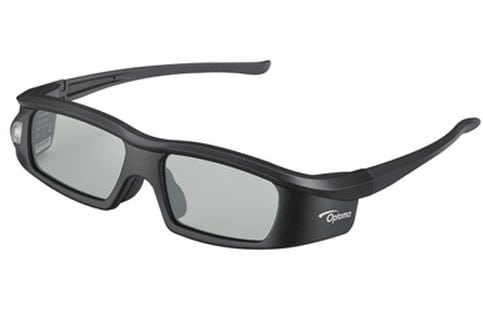HDMI 1.4a and MHL
HDMI 1.4a is the current standard for HDMI. HDMI 2.0 is being rolled out now, but the primary benefit is that HDMI 2.0 supports true 4K content. There are no projectors currently on the market, that can even accept a 4K input, that list price for less than $4995, and in the US, no true 4K projectors under $14,999 list price.
The HD141X supports HDMI 1.4a, which means it also supports Blu-ray 3D, which requires that level of HDMI. Older Optoma projectors with the older HDMI 1.3 were unable to work with Blu-ray 3D unless you spent a bunch of money on a converter.
So, basically, the HD141X projector has just what it should have as far as HDMI is concerned.
That brings us to MHL. Of the two HDMI ports on the side of this projector, HDMI1 supports MHL, which is designed to work with smart devices, thus making the projector "smarter". Some Android tablets and phones can support MHL, to interface to this projector. More to the point though are devices such as using a Roku stick. Plug one of those in, and via Wifi, Roku brings you tons of channels of content over your Wifi. Around here, I use Roku at times to watch Netflix content at times, or to view streaming channels from a great many other sources.
 Click Image to Enlarge
Click Image to EnlargeThose of you with game machines such as the PS3 or PS4, are used to seeing the same type of capability, so figure the types of things (including Netflix) that you can access from your game machine, become available to you without one, just by stuffing a Roku stick into your HDMI MHL input!
That makes a particularly handy way to bring in content when "portable". Two weeks ago, while testing an indoor / outdoor screen (outdoors), I took another projector with MHL outside, plugged it into power, plugged in my Roku stick and we watched some 30 Rock, and part of a football TV program. Simple. I didn't have to drag out a satellite box and wiring, nor a Blu-ray or DVD player.
Well this entry level Optoma has MHL, and it works. Some photos in this review, including this one were taken of content fed to the Optoma via my Roku stick. Nice to have. BTW, its important that a projector using a Roku stick (or Amazon's or others) have their own speakers built in, as this Optoma does.
Wireless HD Option
This is a trending feature. Until recently, only a handful of projectors offered a wireless solution for HDMI. Here's the issue. The projector is normally somewhere in the middle of the room. The other gear - AV receiver, satellite or cable box, DVD and Blu-ray players, even Apple TV, are usually not close. That means running wires to the projector from those devices. HDMI cabling is somewhat expensive, but more to the point, few folks want it running across the floor. If your projector setup is permanent, the most popular choice has always been to run the wiring through the walls, and ceiling. Now that can get expensive.
 Click Image to Enlarge
Click Image to EnlargeInstead, you can use a wireless solution such as Wireless HD. It works. It's not perfect - but for most folks it can be a good choice. First, picture quality should not suffer, and second, it saves a fortune compared to opening up walls. The downside is that as new standards, such as HDMI 2.0 come out, you have to expect a longer wait until there's a Wireless HD that supports 2.0.
No matter though with a projector like this one. Now if you were looking at the $14,999 4K Sony VW600ES, then, yes, you really want the support for HDMI 2.0 or you can't have 4K! Current Wireless HD, like Optoma's optional WHD200 would not be a problem with any projector I can think of, under $4000.
The WHD200 Wireless HD Transmitter seems to have a list price of $299, but can be found online with a street price often down around or slightly below $250. It has two HDMI inputs on the transmitter end. Before buying the WHD200 you might consider other 3rd party alternatives, many of which offer a lot more inputs, and in some cases separate digital audio out as well. The speed is officially fast enough so as not have any significant input lag, so it won't affect gaming speed.
3D Performance and 3D Glasses
I am having fun with 3D. I still have 3D DLP-Link glasses here, even though I really prefer the performance and range, and consistency of RF emitters and glasses. I also have a 3rd party RF emitter though, definitely better (and lighter glasses) from XPAND.
The thing is, for 3D using DLP-Link glasses, all you have to do is go buy some DLP-Link glasses, they pick up the sync signal which is embedded into the picture. If you want to go RF, though, you'll need an RF emitter, which will set you back something approaching $200. There are, however, more lightweight, and very low cost RF glasses than DLP-Link. In fact the ones I used are Samsung brand that sell for less than $20 a pair.
As expected 3D is pretty clean - that is there is no visible crosstalk to report during normal viewing. One of the best things is that there's good brightness in 3D. Even avoiding Bright mode in color, there's still enough brightness to tackle a typical 120" diagonal screen. For those not familiar, 3D requires over twice the lumens to produce the same brightness as 2D. This is good news for enjoying a 3D movie, say in a normal room - a family room or living room, on a large screen in the evening with lights down.
 Click Image to Enlarge
Click Image to EnlargeEco Modes and Lamp Life
There are three lamp modes: Bright, Eco, and Dynamic. Even Bright mode claims 5000 hours which is about as good as a full power mode gets on projectors these days, unless you have a solid state light source (laser, led, hybrid...).
Optoma also says Eco mode expands the life to 6000 hours.
Dynamic mode can go further, out to 6500 hours. Dynamic is basically using lamp dimming to adjust to the picture. It uses less lamp power if there are no bright areas in the image. As Optoma puts it, it can run on as little as 30% of full power (on pretty dark scenes.)
Basically Optoma also uses the lamp dimming as an alternative to a dynamic iris.
Dynamic Black - Lamp Dimming
Dynamic Black is Optoma's name for using their lamp dimming technology to lower black levels by reducing overall brightness in scenes that have no fully bright areas. It works, and we've reviewed it on many Optoma projectors. The downside is that it's relatively slow compared to an iris, so you tend to notice the dimming affect.
If you find its action annoying, don't use it. Sometimes you'll see a slow brightening and dimming as a scene changes in brightness slowly. I strongly favor dynamic irises for "lowering" black levels.




